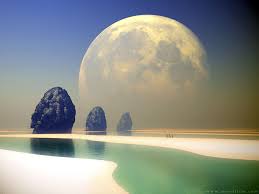Desktop Background Free Biography
Bhutan , is a landlocked state in South Asia, located at the eastern end of the Himalayas and bordered to the south, east and west by the Republic of India and to the north by the People's Republic of China. Bhutan is separated from the nearby country of Nepal to the west by the Indian state of Sikkim, and from Bangladesh to the south by the Indian states of Assam and West Bengal.
Bhutan existed as a patchwork of minor warring fiefdoms until the early 17th century, when the area was unified by Shabdrung Ngawang Namgyal, who fled religious persecution in Tibet and cultivated a separate Bhutanese identity. In the early 20th century, Bhutan came into contact with the British Empire, after which Bhutan continued strong bilateral relations with India upon its independence. In 2006, Business Week rated Bhutan the happiest country in Asia and the eighth-happiest in the world, based on a global survey
Bhutan’s landscape ranges from subtropical plains in the south to the sub-alpine Himalayan heights in the north, with some peaks exceeding 7,000 metres (23,000 ft). The state religion is Vajrayana Buddhism, and the population of 691,141 is predominantly Buddhist, with Hinduism the second-largest religion. The capital and largest city is Thimphu. In 2007, Bhutan made the transition from absolute monarchy to constitutional monarchy, holding its first general election. Bhutan is a member of the United Nations and the South Asian Association for Regional Cooperation (SAARC); it hosted the sixteenth SAARC summit in April 2010. The total area of the country has been reported as 38,394 square kilometres (14,824 sq mi) since 2002. The area had previously been reported as approximately 46,500 km2 (18,000 sq mi) in 1997.Names similar to Bhutan — including Bottanthis, Bottan, Bottanter — began to appear in Europe around the 1580s. Jean-Baptiste Tavernier's 1676 Six Voyages is the first to record the name Boutan. However, in every case, these seem to have been describing not modern Bhutan but the Kingdom of Tibet. The modern distinction between the two did not begin until well into Bogle's 1774 expedition — realizing the differences between the two regions, cultures, and states, his final report to the East India Company formally proposed labeling the Druk Desi's kingdom as "Boutan" and the Panchen Lama's as "Tibet". The EIC's surveyor general James Rennell first anglicized the French name as Bootan and then popularized the distinction between it and greater Tibet.The precise etymology of Bhutan is unknown, although it quite probably derives from the Tibetan endonym Bod, used for Greater Tibet. It is traditionally taken to be a transcription of the Sanskrit-anta (end of Tibet"), in reference to Bhutan's position as the southern extremity of the Tibetan plateau and culture.Locally, Bhutan has been known by many names. The earliest western records of Bhutan, the 1627 Relacao of the Portuguese Jesuits Estêvão Cacella and João Cabral, records its name variously as Cambirasi (among the Koch Biharis.Potente, and Mon (an endonym for southern Tibet).The first time a separate Kingdom of Bhutan did appear on a western map, it did so under its local name as "Broukpa.Others including Lho Mon ("Dark Southland"), Lho Tsendenjong ("Southland of the Cypress"), Lhomen Khazhi ("Southland of the Four Approaches") and Lho Men Jong ("Southland of the Herbs.








Bhutan , is a landlocked state in South Asia, located at the eastern end of the Himalayas and bordered to the south, east and west by the Republic of India and to the north by the People's Republic of China. Bhutan is separated from the nearby country of Nepal to the west by the Indian state of Sikkim, and from Bangladesh to the south by the Indian states of Assam and West Bengal.
Bhutan existed as a patchwork of minor warring fiefdoms until the early 17th century, when the area was unified by Shabdrung Ngawang Namgyal, who fled religious persecution in Tibet and cultivated a separate Bhutanese identity. In the early 20th century, Bhutan came into contact with the British Empire, after which Bhutan continued strong bilateral relations with India upon its independence. In 2006, Business Week rated Bhutan the happiest country in Asia and the eighth-happiest in the world, based on a global survey
Bhutan’s landscape ranges from subtropical plains in the south to the sub-alpine Himalayan heights in the north, with some peaks exceeding 7,000 metres (23,000 ft). The state religion is Vajrayana Buddhism, and the population of 691,141 is predominantly Buddhist, with Hinduism the second-largest religion. The capital and largest city is Thimphu. In 2007, Bhutan made the transition from absolute monarchy to constitutional monarchy, holding its first general election. Bhutan is a member of the United Nations and the South Asian Association for Regional Cooperation (SAARC); it hosted the sixteenth SAARC summit in April 2010. The total area of the country has been reported as 38,394 square kilometres (14,824 sq mi) since 2002. The area had previously been reported as approximately 46,500 km2 (18,000 sq mi) in 1997.Names similar to Bhutan — including Bottanthis, Bottan, Bottanter — began to appear in Europe around the 1580s. Jean-Baptiste Tavernier's 1676 Six Voyages is the first to record the name Boutan. However, in every case, these seem to have been describing not modern Bhutan but the Kingdom of Tibet. The modern distinction between the two did not begin until well into Bogle's 1774 expedition — realizing the differences between the two regions, cultures, and states, his final report to the East India Company formally proposed labeling the Druk Desi's kingdom as "Boutan" and the Panchen Lama's as "Tibet". The EIC's surveyor general James Rennell first anglicized the French name as Bootan and then popularized the distinction between it and greater Tibet.The precise etymology of Bhutan is unknown, although it quite probably derives from the Tibetan endonym Bod, used for Greater Tibet. It is traditionally taken to be a transcription of the Sanskrit-anta (end of Tibet"), in reference to Bhutan's position as the southern extremity of the Tibetan plateau and culture.Locally, Bhutan has been known by many names. The earliest western records of Bhutan, the 1627 Relacao of the Portuguese Jesuits Estêvão Cacella and João Cabral, records its name variously as Cambirasi (among the Koch Biharis.Potente, and Mon (an endonym for southern Tibet).The first time a separate Kingdom of Bhutan did appear on a western map, it did so under its local name as "Broukpa.Others including Lho Mon ("Dark Southland"), Lho Tsendenjong ("Southland of the Cypress"), Lhomen Khazhi ("Southland of the Four Approaches") and Lho Men Jong ("Southland of the Herbs.
Desktop Background Free
Desktop Background Free
Desktop Background Free
Desktop Background Free
Desktop Background Free
Desktop Background Free
Desktop Background Free
Desktop Background Free
Desktop Background Free
Desktop Background [Free] In Description
"Imagination" Desktop Background [Free Download!]
No comments:
Post a Comment